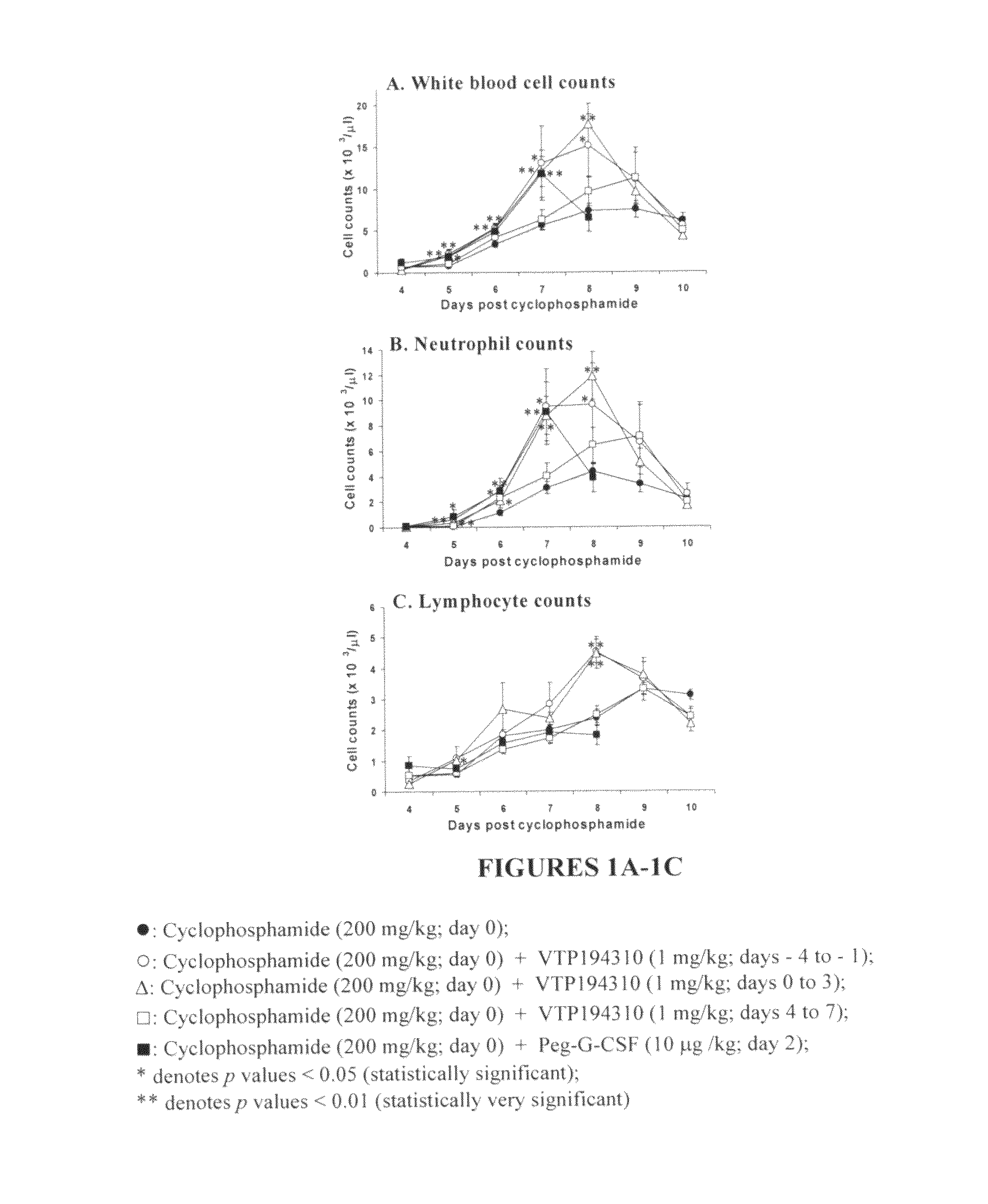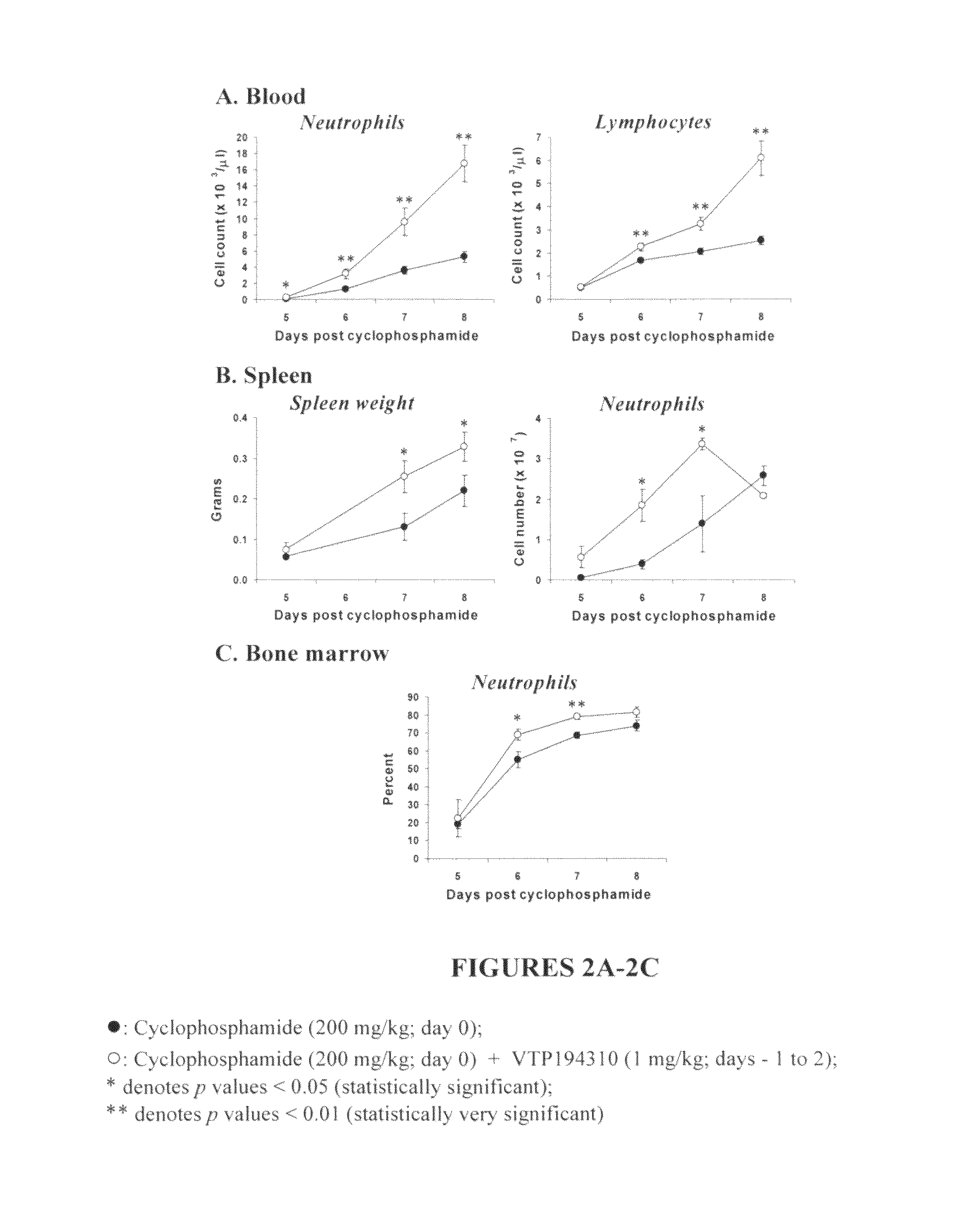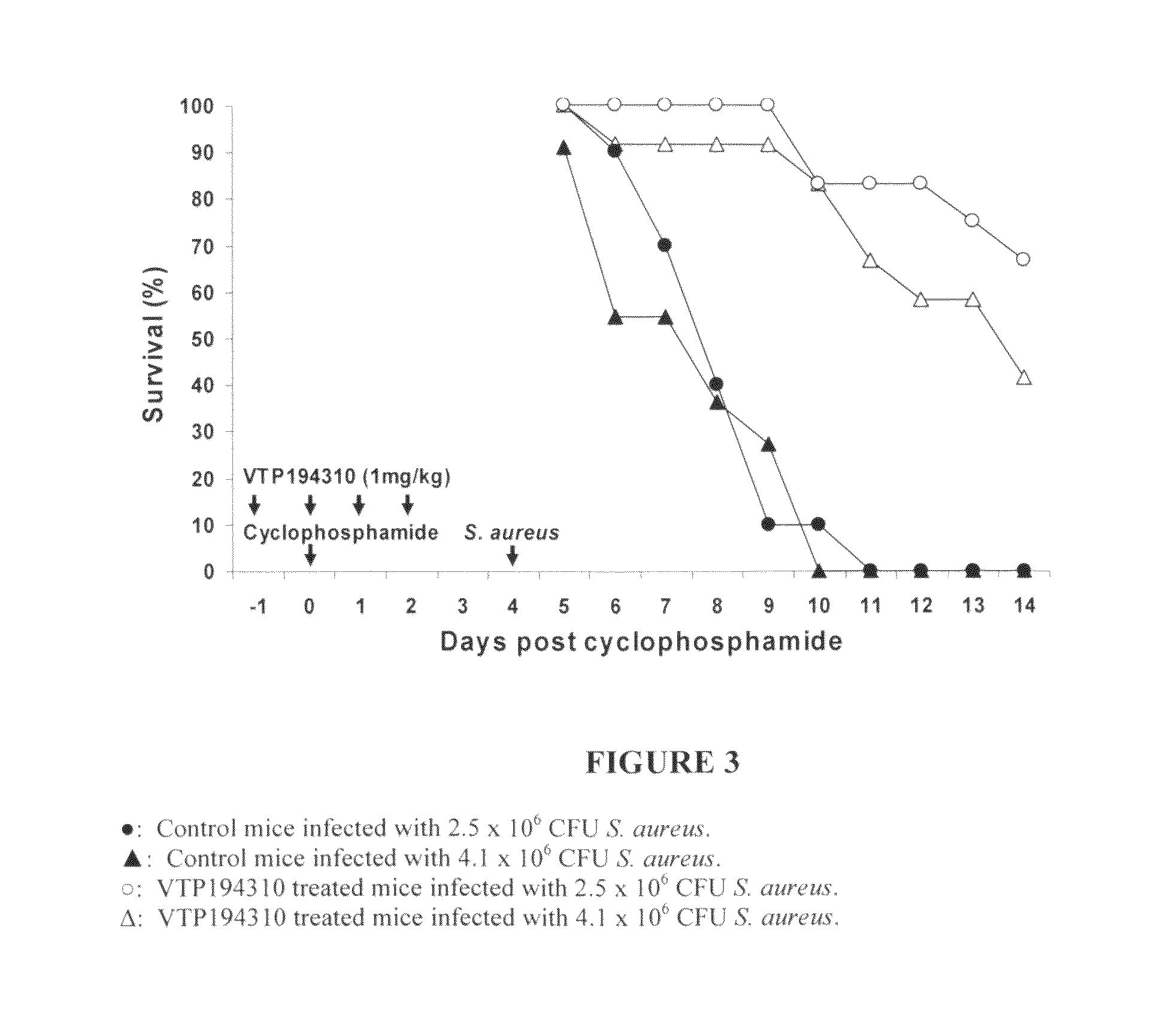Use of a RAR antagonist or inverse agonist for the treatment of chemotherapy and/or radiation therapy side effects
a rar antagonist and inverse agonist technology, applied in the field of mammals' side effects of chemotherapy and radiation therapy, can solve the problems of cancer cells being damaged, skin irritation and hair loss in the area being treated, and damage to the bone marrow, so as to reduce the number of neutrophils, reduce the number of immune functions, and reduce the effect of hematopoietic function
- Summary
- Abstract
- Description
- Claims
- Application Information
AI Technical Summary
Benefits of technology
Problems solved by technology
Method used
Image
Examples
example 1
Neutrophil and Lymphocyte Recovery in a Cyclophosphamide-Induced Mouse Model of Leukopenia
Mice
[0186]Mice purchased from Charles River Laboratories (Wilmington, Mass.) were housed individually in micro-isolater cages in a 12-hour light / dark cycle. They were housed under pathogen-free conditions, and received a normal standard diet and water ad libitum. They were acclimated for one week at the Association for Assessment and Accreditation of Laboratory Animal Care (AAALAC) accredited animal facility (Allergan Inc., Irvine, Calif.) prior to experiments. Study designs were approved by the Institutional Animal Care and Use Committee. Body weights were monitored throughout each study. Weight of the mice was in the range of 22-27 g at the day of treatment initiation. The mice were healthy, not previously used in other experimental procedures.
In Vivo Leukopenia Model
[0187]Leukopenia was induced in male BDF1 mice (C57Bl×DBA2, 7.5-12 weeks) by an intra-peritoneal (i.p.) injection of 200 mg / kg ...
example 2
Peripheral and Systemic Neutrophil and Lymphocyte Recovery in a Cyclophosphamide-Induced Mouse Model of Leukopenia
[0193]It was examined whether the VTP 194310-driven neutrophil recovery in leukopenic mice was systemic by looking at the levels of neutrophils (Gr1+ve / CD11b+ve cells) in the spleen and bone marrow. These mice were gavaged with VTP 194310 on days −1 to 2 in relation to CPM treatment.
Results
[0194]As the data shows, the neutrophil, and lymphocyte counts were significantly elevated in VTP 194310-treated mice at days 6 to 8, as compared to control recovering mice (see FIG. 2A). Spleen weight was increased at days 7 and 8 in the VTP 194310-treated mice as compared to the controls. The absolute number of Gr-1+ve / CD11b+ve cells was significantly increased in the spleen of VTP 194310-treated mice at days 6 and 7 (see FIG. 2B). Additionally, immature granulocytes, identified as Gr-1low / CD11b+ve, were elevated in the spleen of VTP 194310-treated mice at days 6 and 7. The absolute ...
example 3
Measurement of the Protective Effect of VTP194310 Against S. Aureus Infection in Leukopenic Mice
[0195]S. aureus 29213 obtained from American Type Culture Collection (ATCC) (Rockville, Md.) was used to induce infections in leukopenic female BDF1 mice (20-22 g). S. aureus were cultured at 37° C. in Tryptic Soy broth until the mid-logarithmic phase of growth (optical density at 600 nm=0.3), harvested, and washed with PBS. The number of bacteria was enumerated by serial dilution with PBS, plating onto blood agar, and counting colony-forming units (CFU) 48 hours after incubation at 37° C. The suspension was adjusted to 10° CFU / ml.
[0196]Mice were rendered leukopenic by i.p. injection of CPM at 200 mg / kg. A lethal dose (LD) of S. aureus was determined by intravenous injections of 1×103 to 1×108 CFU to groups of 10 mice 4 days after CPM treatment. 10-day survivors were enumerated, and the LD95 of S. aureus was calculated by Probit analysis. Treatment with VTP 194310 (at 1 mg / kg) was started...
PUM
| Property | Measurement | Unit |
|---|---|---|
| time | aaaaa | aaaaa |
| temperature | aaaaa | aaaaa |
| temperature | aaaaa | aaaaa |
Abstract
Description
Claims
Application Information
 Login to View More
Login to View More - R&D
- Intellectual Property
- Life Sciences
- Materials
- Tech Scout
- Unparalleled Data Quality
- Higher Quality Content
- 60% Fewer Hallucinations
Browse by: Latest US Patents, China's latest patents, Technical Efficacy Thesaurus, Application Domain, Technology Topic, Popular Technical Reports.
© 2025 PatSnap. All rights reserved.Legal|Privacy policy|Modern Slavery Act Transparency Statement|Sitemap|About US| Contact US: help@patsnap.com



